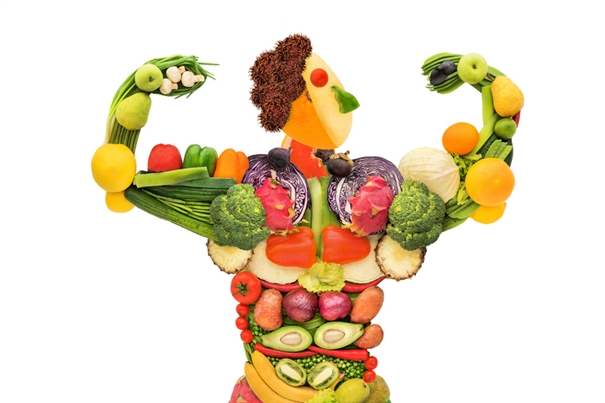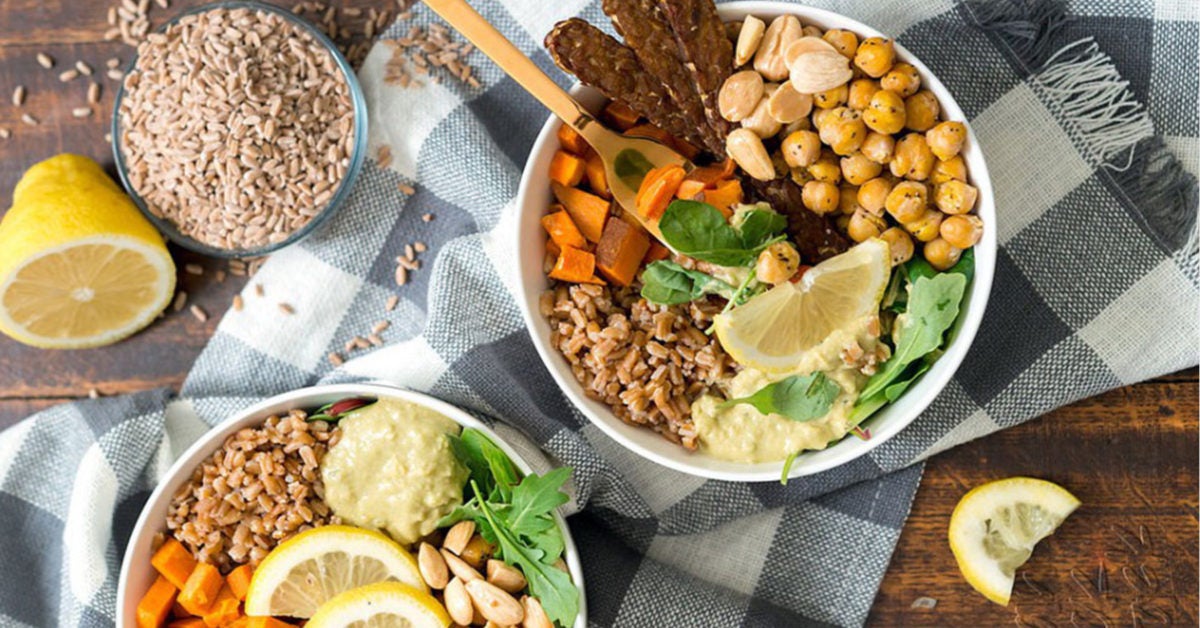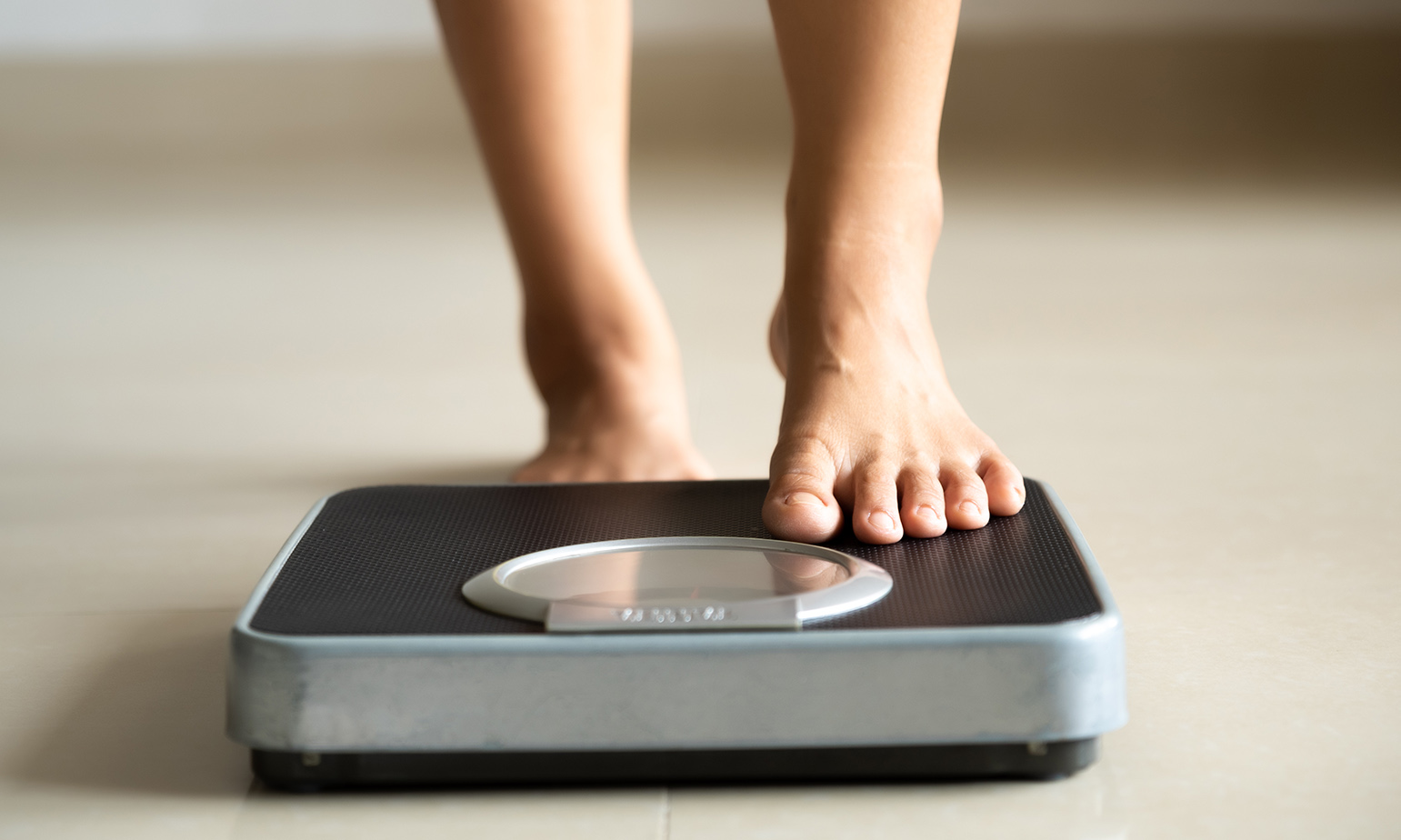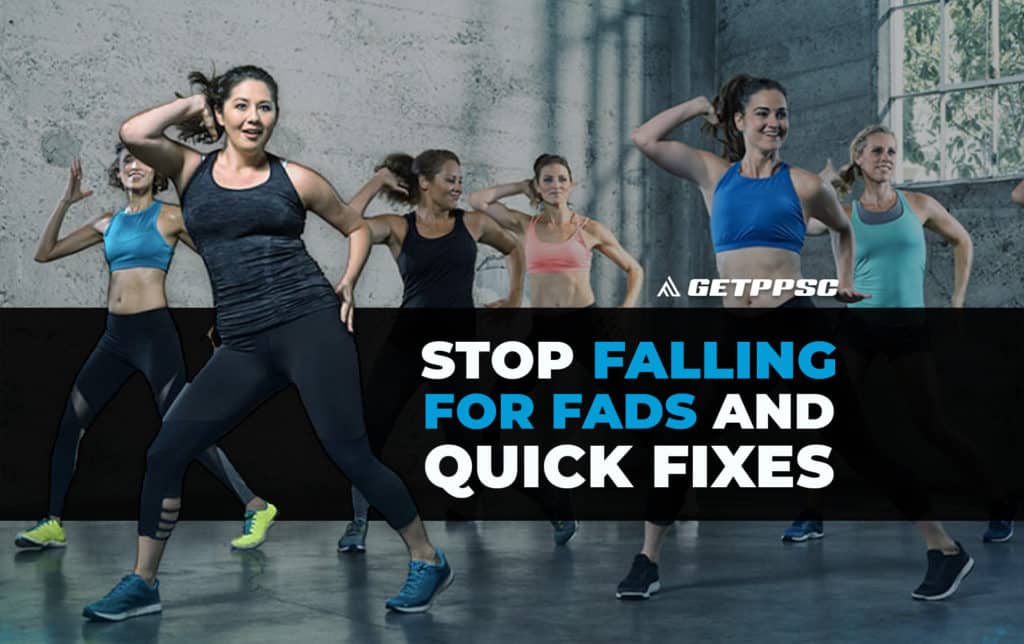We truly don’t have a weight loss problem in America.
I know what you’re thinking, so allow me to explain. Around six out of every seven people who are overweight are able to lose weight in their lifetime.
Fantastic.
The not-so-good news is that after a year 35% of those folks have gained back all their weight (sometimes plus some), and after five years nearly ALL of the folks who have lost weight have gained their weight back (again, sometimes adding even more additional weight).
This is a direct result of not TRULY forming habits that stick as a lifestyle… rather, it is fad diets, all liquid diets, diet pills, magic drinks, super high intensity training (that leaves you hurt, chronically fatigued, burnt out or all of the above) and the list goes on.
It’s time to START helping our clients build better habits so they STOP falling for fads and quick fixes. Here’s five healthy habits you should consider making into your clients’ lifestyle to help them look, feel, and function their best for life.
Make Strength Training A Priority

PPSC Director of Education Clifton Harski just published one of the most well written and well-rounded articles I have ever read on WHY YOU SHOULD GET STRONG.
It talks all about strength training and why when it comes to training, if there is one place that you should put more emphasis on, it would be getting stronger. In a nutshell, you just flat out get the most bang for your buck out of traditional strength training.
You get stronger (obviously). Not just stronger in the gym. Stronger muscles, stronger bones, stronger tendons/ligaments, stronger cardiovascular system (specifically when adding in super sets, shorter rest etc.) and even clearer thinking – a stronger mind.
You also build more lean muscle tissue that inevitably has a positive impact on metabolism and hormones leaving you feeling more energized, sleeping better and having a better sense of overall well-being.
Although working on other qualities is advisable, strength training gives you the most bang for your buck. Most of you who are reading this have probably:
A) Attended the PPSC course
OR
B) Are trainers/coaches who are interested in being even better coaches/trainers
The actionable takeaway here? Encourage people to buy in to strength training as the meat and potatoes of their physical activity.
2-3x per week of full body strength training (Squat, Hinge, Lunge, Push, Pull, Carry at least 2x per week) for a VAST MAJORITY of people will do absolute wonders for how they look, feel and function.
MAKE CARDIO/CONDITIONING A PRIORITY FOR HEALTH, NOT BURNING CALORIES

Doing too much cardio can be detrimental to your health.
Yup, I said it.
Doing endless amounts of Peloton rides, group exercises classes where there is no rest and no focus on progression (getting stronger over time) can yield negative results.
Not to mention that when I talk to folks who have been spinning their wheels with copious amounts of cardio for months/years on end they say things like:
“I have to burn off the pizza and beer I eat”
or
“in order to eat all the pizza and drink all the beer I want on the weekends, I have to kill myself at the gym with cardio”
I hate to be the bearer of bad news but, this isn’t a healthy relationship to have with training and more specifically, cardio training. This also is not good for your relationship with food, as we should never be focused on “burning off” food we have consumed or “killing yourself” to eat high calorie, highly processed food.
This will eventually lead to burnout, injury and/or a “falling off the wagon” of taking care of your physical body/health AND your mental health regarding how you view the food you are consuming.
We don’t want to exercise/train to burn calories/eat poor quality, high calorie foods. We want to do it because it is GOOD for our physical and mental health and our body and brain adapts over time to getting out of our comfort zone (aka “good” stress).
With all of that being said, we should be doing cardio/conditioning for HEALTH. We know that having a good base level of fitness/cardio is vitally important for bodily functions, heart health and more.
And one of the easiest and lowest hanging fruits for a majority of clients is to simply WALK MORE.

Baseline Goal: Having a step goal can be a good way of going about adding more low-level aerobic activity to our clients lives.
Having clients track steps for a week or so, figuring out an average, and then slowly adding in steps week by week until they can consistently get roughly 8-12k steps per day is a FANTASTIC way to get clients to buy into doing “cardio” that won’t leave them hating life or burning out from HIIT intervals on the daily.
When done consistently for weeks, months and YEARS, this yields fantastic results. For clients who are more advanced, having a step goal daily on top of one medium intensity conditioning session, and one higher intensity conditioning session (plus your 3-4 strength training sessions per week) seems to be a sweet spot to work up to.
Upgraded Goal: Integrate Cardio 4x per week between 60%-80% Target Heart Rate
(Target HR = ((Max HR-Resting HR) * % Intensity) + Resting HR)
For the medium session this might look like the Airdyne bike for 3-5 miles working your way up to a faster pace as you go. For the higher session it might look like 10-15 seconds of MAX EFFORT pedaling on the bike followed by 45-60 seconds of “rest pedaling” for 5-10 rounds.
MAKE NUTRITION CUSTOMIZED TO FIT YOUR LIFESTYLE & GOALS

I want to start off by saying that nutrition is quite nuanced and is highly dependent on the individual (nutrition/dieting history, habits, lifestyle etc.) and if you have a client who is showing potential signs of serious food relationship issues or strange behavior around food, REFER OUT!
As a trainer/strength coach/fitness professional, you should always have a network of trained/licensed professionals you can reach out to so that the person that is paying you to help them can get the professional help they need.
In this case, it’s someone who is a registered dietician. With that being said, nutrition should be CUSTOMIZED to fit your lifestyle and goals.
The first thing that you should realize is that, in my experience, MANY folks who have come to me wanting to train, build strength, muscle and resiliency are severely under consuming protein.
Protein

For optimal results and recovery from the training our clients are doing in the gym, make sure they’re consuming roughly 0.7g-1g per pound of body weight (if your client has 100+ lbs. to lose, use the weight they are aiming to be) in protein.
For a direct guide to eating healthier check out our Summer Shred Guide
How do you figure out how much protein they are consuming? This is where nutrition coaching comes into play. Teaching/educating your clients on the importance of TRACKING what they are consuming is vitally important for success when it comes to nutrition.
Does this have to be done forever? Absolutely not. BUT, whether it be tracking calories, macronutrients (protein, carbohydrates and fat) and fiber in an app like MyFitnessPal OR tracking food based on the hand measurement system and sending you pictures of their meals, you SHOULD get clients to buy into to doing this for a period of time.

The clients that I have seen have the most success with changing nutritional habits for the better have done some sort of tracking for at least six months to a year.
This ensures they understand what macronutrients are in which foods, what their plate should look like most of the time for health and for their goals AND helps to solidify nutritional habits that they can sustain for the rest of their life.
The first step is establishing a baseline for the client.
This involves having them track for 7-14 days to figure out WHAT and HOW MUCH they are consuming.
From there, the coaching process begins. We already established guidelines for protein, and sometimes you have to help the client work their way up to that 0.7g-1g per pound number.
If someone is eating very low protein, you don’t want to shoot the number up too fast as compliance could potentially be an issue and their digestive system will most likely take a big hit since it’s not used to that amount of protein.
Carbs and Fats

Once protein targets are set, we then look into carbohydrates and fats. This is where there is a lot of individualizing that comes into play based on goals, lifestyle and food preferences.
From a preference perspective, some folks lean more towards carbs (rice, potatoes, oats etc.) while others like fats more (whole eggs, avocados, nuts/seeds etc.).
The one thing to keep in mind is that for optimal hormonal health for both men and women, it’s a good idea to get AT LEAST 20-25% of the total amount of calories from dietary fat.
That’s right – DON’T FEAR FAT – especially fat that hasn’t been processed (aka anything with more than one ingredient). The percentage of fat can be higher, but realize that fat contains 9 calories per gram, and if total daily fat percentage is higher, carbohydrate intake and daily percentage of total calories must be lower.
So, as you can see, there is a tradeoff. For most of our clients training hard and lifting weights in the gym, going super low on carbohydrates probably isn’t best.

Now that we’ve discussed preferences in regard to fat and carbs, we must now hit on goals. If protein is equated, and you are getting at least 20-25% of total daily intake of calories from dietary fat – you can literally adjust calories up or down depending on goals.
If the goal is to gain weight/strength/size/muscle mass – you will want to take your maintenance caloric intake (how much you need to eat to maintain your current body weight) and add 250-500 calories.
If the goal is fat loss/muscle/strength retention – you will want to do the opposite and take away 250-500 calories.
For folks that may be tracking based on the hand measurement system, it may look like adding/subtracting carbohydrates/fat sources from meals and tracking weekly body weight to see if you are on the right track for your goals.

When gaining, 1-2 lbs. per week is sufficient and when losing, 1-1.5 lbs. per week is best for lean muscle retention – which has been proven to be quite important for metabolic health. And who wants to lose muscle?
The last big point is lifestyle, and many times this comes down to how many meals to eat per day.
Science on meal timing tells us that in the grand scheme of things (so long and protein and appropriate calories for the goal of gaining or losing are equated) it really doesn’t matter how many times per day we eat.
However, many clients I’ve worked with have bad habits that involve going too long without eating, then binging, then realizing they haven’t consumed the protein they need and far too many carbs and fat to throw themselves into a massive caloric surplus that inevitably leads to fat gain.
Getting folks to get into a routine of eating roughly 3-4 meals per day stabilizes blood sugar, curbs cravings and allows for the opportunity to consume adequate protein as well.
Will there be outliers that prefer 2 meals and can hit their targets? Sure! But for many, building better habits and having consistency with meals will yield long term consistency, sustainability and health both physically and mentally/emotionally.
TAKE OWNERSHIP OF YOUR LIFESTYLE

There are certain base level things that you should be doing with your lifestyle that are quite important for being the healthiest human possible.
We’ve covered the importance of strength training, cardio/conditioning and the importance of moving your body and being able to build better nutritional habits.
The other things we have to consider are sleep quality/quantity and being able to manage stress. And if we want our clients to be their healthiest selves, they must take ownership of these lifestyle factors.
Sleep is vital for performance and recovery from your training – but moreover, it’s vital for being a highly functioning human being in general.
Just one night of poor sleep can increase anxiety, increase cravings for sugary/fatty foods and leave you feeling lethargic and low on energy. Ideally, we’re all sleeping 7-9 hours per night.
This isn’t an ideal world. Everyone is different when it comes to how much (quantity) sleep they need. What most sleep experts agree on however, is that under 5-6 hours of sleep probably isn’t ideal for most people.

Some tips to help clients improve their sleep quality/quantity would be:
• Cut down on electronic use in the evenings/at night – and if they are watching TV and it’s something they do, they may want to look into blue blocking glasses.
• Cool/dark room (65-68 degrees or so, individual dependent) with blackout curtains. Should be like a cave.
• Eliminate distractions from the bedroom. No TV, phone, iPad etc. in the bedroom. Just sleep and sex.
• Cut down on alcohol, sugary/fatty foods – ESPECIALLY before bed.
• Cut caffeine intake and cut off caffeine intake at least 6 hours before bed.
• Try to go to bed and wake up at roughly the same time daily.
The other big point on lifestyle for our clients is being able to manage stress. Many of our clients are living stressful lives. They have work, spouses and children.
They have bills to pay, sporting events to travel to for their kids, friends/family members that don’t value health in the same ways they do etc. etc.
These are all stressful factors. Many times, a client’s entire environment is an extreme challenge.

From the foods that are present in their own household because of their unsupportive family members, their friends who want to binge drink on the weekends, traveling and not having access to the best quality foods, being constantly stressed at work and just generally being pulled in too many different directions.
This is where the discussion of ownership has to come into play. Breathing, meditation and generally being able to do things that fill up the mental/emotional health bucket for our clients becomes increasingly important the more stress they have in their lives.
Encouraging them to surround themselves with people who want to see them succeed with their health/fitness outcomes is also very important. This isn’t just the folks they’re around in person.
It’s the TV/news they’re consuming, the books they read, the podcasts they listen to etc.

The Podcast you CAN’T MISS – Pain-Free Performance Podcast
Encouraging them to find a meditative/breathing practice, cut down on drinking alcohol, listen to podcasts, read books and generally consume information about improving their lifestyle/health can be quite helpful.
Especially when our society is surrounded by temptation to be comfortable/stay in a “comfort zone” of being lazy, overweight, mentally unstable and not do the things we know are necessary to look, feel and function their best. Helping them take ownership of these things can LITERALLY change someone’s life, FOR LIFE.
(BONUS) HIRE A COACH TO HELP WITH ALL OF THE ABOVE

One of the best things people can do to help with all of the above is GETTING SOME ACCOUNTABILITY! And that’s where we, as fitness professionals, come into play.
Speak to the people in your circle – offer a free train smarter strategy session and GET TO KNOW THEM. Build a relationship and show how much value you can add to their life by simply making some adjustments to their lifestyle.
Adding in some GOOD (training, movement) and potentially helping to change some of the “bad” habits for better ones so they will NEVER fall for another FAD or QUICK FIX ever again!
Closing Thoughts
Building the body and the life you want isn’t going to be an overnight achievement. You also won’t get everything right all the time. The beauty of body optimization is the endless pursuit to tinker with the variables, upgrade what you can, and constantly try to better yourself. We only have one body and one life – why waste it!



